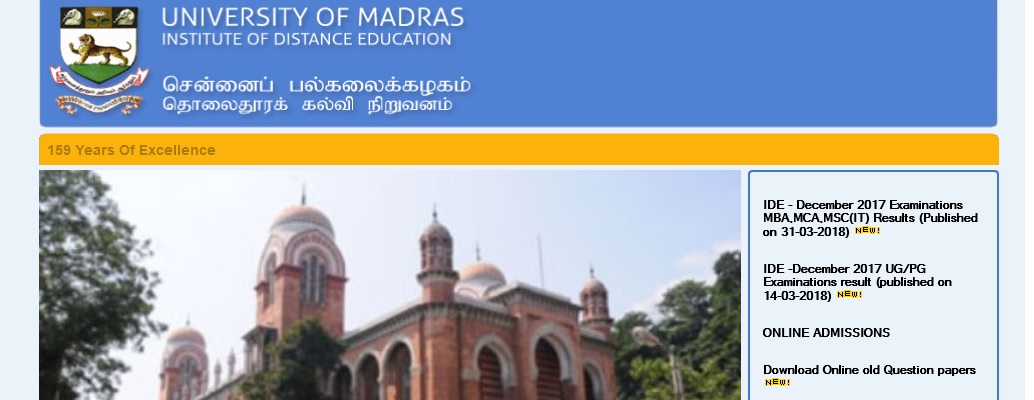BMM1A Indroduction To Communication B.C.A Question Paper : ideunom.ac.in
University : University of Madras
Degree : B.C.A
Department : Multimedia & Animation
Subject :BMM1A Indroduction To Communication
Document type : Question Paper
Website : ideunom.ac.in
Download Previous/ Old Question Paper :https://www.pdfquestion.in/uploads/ideunom.ac.in/6812-._MAY2011_uid72151%20BMM1A.pdf
IDEUNOM Communication Question Paper
U/ID 72151/BMM1A
Time : Three hours
Maximum : 100 marks
MAY 2011
PART A — (10 × 3 = 30 marks)
Answer any TEN questions.
All questions carry equal marks.
1. Encoding.
2. Communication context.
3. Popular culture.
4. Inter textuality.
5. Mass media.
6. Noise.
7. Semiotics.
8. Paralanguage.
9. Verbal communication.
10. Virtual reality.
11. Mediation.
12. Kinesics.
PART B — (5 × 6 = 30 marks)
Answer any FIVE questions.
All questions carry equal marks.
13. What are the types of communication? Explain.
14. Describe the characteristics of mass media.
15. Write about the functions of non-verbal communication.
16. Why do they call the Internet as new media? Explain.
17. Define mass culture, subculture and counter culture.
18. Write about agenda setting in media.
19. Explain about ideology with examples.

PART C — (4 × 10 = 40 marks)
Answer any FOUR questions.
All questions carry equal marks.
20. Elaborate on human space communication.
21. Explain the principles of semiotics.
22. How do media represent women? Discuss with examples.
23. Write about any two models of communication.
24. What are the universal principles of human communication?
25. Explain the characteristics of verbal communication.
October 2012
U/ID 14652/NC1
Time : Three hours
Maximum : 60 marks
PART A : (10 × 1 = 10 marks)
Answer ALL questions.
All questions carry equal marks.
1. List the various options under opening menu of WordStar.
2. Write the various erase commands in the Edit menu of WordStar.
3. What is a database?
4. Write the syntax and purpose of append command in dBase.
5. Define Spreadsheet.
6. How a formula entered in a cell?
7. Why 38E + 2 unacceptable as FORTRAN integer constant?
8. Locate errors, if any, in the following unformatted statement :
PRINT ID, WAGE, RATE.
9. Determine the number of elements in arrays A, B and K according to the statement : DIMENSION A(25), B(3, 8, 4), K(7, 5).
10. What is the difference between FUNCTION subprograms and SUBROUTINE subprograms?
PART B : (5 ´ 4 = 20 marks)
Answer ALL questions
All questions carry equal marks.
11. (a) Discuss how to reforming paragraphs and letters in WordStar.
Or
(b) Explain the four file commands supported in the Block and Save menu in WordStar.
12. (a) Explain the data types of dBase III PLUS.
Or
(b) How to create and modify the database in dBase III PLUS? Explain.
13. (a) List the various advantages of spreadsheet.
Or
(b) Explain the components of a spreadsheet.
14. (a) Define variable and constant with an example.
Or
(b) Explain any two file processing statements in FORTRAN.
15. (a) Explain about FORTRAN subroutines with an examples.
Or
(b) Explain any four operations on strings in FORTRAN.
PART C : (3 ´ 10 = 30 marks)
Answer any THREE questions.
All questions carry equal marks.
16. Describe the various block commands of WordStar.
17. Explain any five dBase commands.
18. Explain the any five mathematical functions in Spreadsheet.
19. Describe the various forms of IF statements in FORTRAN with examples.
20. Write a FORTRAN program to arrange ‘n’ given numbers in ascending order.
October 2013
Elements Of System Software :
: U/ID 14655/NCC
Time : Three hours
Maximum : 100 marks
PART A : (10 ´ 2 = 20 marks)
Answer ALL questions.
All questions carry equal marks.
1. What is System Software?
2. Define the term “multiprogramming”.
3. How to define a symbol in an assembly language?
4. What is single pass translation?
5. What is a compiler?
6. What is symbol table?
7. What is relocation?
8. List the various parameter transmission mechanisms.
9. What is an interpreter?
10. What is a profile monitor?
PART B : (5 ´ 7 = 35 marks)
Answer ALL questions.
All questions carry equal marks.
11. (a) Explain the various components of system software.
Or
(b) Discuss about software processors.
12. (a) Discuss about translator passes of an assembler.
Or
(b) Describe the schematic of a macro processor.
13. (a) With an illustration, explain the compilation, execution and test/debug modes of an incremental compiler.
Or
(b) Explain the two types of parsing techniques.
14. (a) Explain the need for loading, relocation and linking.
Or
(b) Explain the process of linking program overlays with an example program.
15. (a) Describe the editor structure.
Or
(b) Discuss about programming environments for software system.
PART C : (3 ´ 15 = 45 marks)
Answer any THREE questions.
All questions carry equal marks.
16. Explain the evolution of system software.
17. Explain the three kinds of an assembly language statement with an example.
18. With a neat diagram, explain the different phases of a compiler and give out its functions.
19. Discuss about relocating and direct linking loaders.
20. What is debug monitor? And explain their facilities and the sequence of steps involved in dynamic debugging.